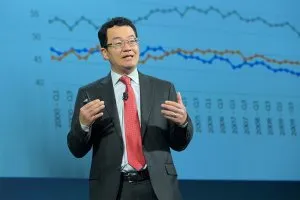Urban Agriculture Takes Root across the Country
From new urbanist developments featuring farms and community gardens to urban farms and community gardens tucked away in vacant lots, parks, school yards and rooftops, the concept of growing food where you live is taking root all across America.
The growth of agricultural urbanism, one of several names for new communities featuring farms and food gardens, has prompted Ed McMahon, senior fellow at the Urban Land Institute, to declare that “agriculture is the new golf.”
Instead of building houses snug up against the fairways at golf course communities, he said, smart developers are going green by featuring farms and encouraging gardening at communities that embrace new urbanism principles.
“There are two things going on: people are finding out that green space sells real estate, and the second thing is the whole movement toward local foods,” McMahon said.
“There’s a huge interest in locally grown agriculture.”
One concept of agricultural urbanism has been developed by Duany Plater-Zyberk, the Miami architectural firm that launched the new urbanism movement in the early 1970s.
“We’ve divided agriculture and agricultural urbanism into three separate sectors: rural agriculture, which is traditional farms, bigger farms; peri-urban agriculture, which is yard gardens, community gardens and roof gardens; and intra-urban agriculture, which is very small scale, roof gardens, window gardens and vertical farming,” said Marina Khoury, an architect in Duany Plater-Zyberk’s Gaithersburg, Md. office.
Whether they are called agricultural urbanism or something else, the new residential/farming communities typically promote organic farming, preserve large areas of open green space and cluster residential development around town centers in view of the farm.
Khoury said Serenbe, a development in a largely rural area southwest of Atlanta, is one of the outstanding new communities linking farming and new urbanism. Serenbe is being developed by Steve Nygren, who retired to the area from Atlanta after selling his chain of 34 restaurants. His wife, Marie, coined the term Serenbe by combining the words “serene” and “be.”
Fearful that developers would overrun the area he loved, Nygren rallied neighbors who got the zoning changed on 40,000 acres to protect it from overdevelopment. “That’s when we decided to take our own land and do balanced growth on it to show people what could be done,” he said.
Three themed hamlets, as Nygren calls them, will occupy about 30 percent of Serenbe’s 1,000 acres with the remaining 700 acres dedicated to green space including forests, pastures, a stable and a 25-acre organic farm next door to the center of the agriculturally themed hamlet called Grange.
Nygren said eight acres is currently under cultivation, producing 40 varieties of vegetables and fruits in season.
The farm includes chickens for eggs, cows, sheep and goats. Produce from the farm is sold in the Serenbe Farmers Market, to three restaurants currently open— four more are planned — and distributed to 125 community supported agriculture (CSA) shareholders. One of the restaurants, the acclaimed Farmhouse at the Inn at Serenbe, is run by Nygren’s wife and daughter.
New Town at St. Charles, located about 25 miles northwest of St. Louis, is a community built around a network of canals and lakes, putting every resident within two blocks of the water. Buildings are styled after the 19th century brick buildings in St. Louis.
A 12.5 acre organic farm is located near the town center. New Town residents Nate Tilford and his wife, Angie, manage the farm, which features two greenhouses, ensuring that crops can be grown year round.
The Tilfords sell the vegetables and fruits they produce at a farmers market. In addition to managing the farm, they work with residents, who rent, raise 24 feet by 39 inch beds for gardening.
“For a lot of the people, this is their First experience in gardening,” Tilford said. “They relied heavily on us. We told them what to plant to keep bad bugs out and good bugs in.”
About a dozen volunteers help the Tilfords work the farm and are rewarded with two dinners a year, their pick of flowers grown on the farm and discounts when they buy their food at the farmers market.
One of the largest and most ambitious farms is located in a Conservation Community called Prairie Crossing in Illinois, a one-hour commute to downtown Chicago on the adjacent Metra commuter rail line. The 90-acre Sandhill Organics farm produces a wide variety of fruits and vegetables, using unheated hoop houses, also known as high tunnels, to extend the growing season. The farm includes 40 gardening plots, a five-acre Learning Farm to teach Prairie Crossing school children about agriculture and a Farm Business Development Center that trains future organic farmers.
The future organic farmers lease tracts of up to five acres and are taught the ins and outs of organic farming by Mike Sands, the manager of agriculture operations at Prairie Crossing.
“They’re young entrepreneurs who don’t have much farm background,” Sands said. “They typically go out and work their farm and take business management courses at the community college. We now have four farmers and three grads. The grads are all out there farming bigger farms.”
Southlands, an agricultural urbanism community Khoury is designing south of Vancouver, is planned as a 538-acre community with 200 acres set aside for farming. Developer Sean Hodgins said growing spaces at Southlands will range from a large farm, peri-urban smaller farms, community gardens and window boxes.
“The whole community is going to be designed around how growing things and the community can work together, mostly food,” Hodgins said. “The farm will be a very visible component. It will be the character and form maker of the community. It would not be hidden behind a row of trees.”
Quint Redmond, a Golden, Colo., designer, is taking the development of farming communities in a somewhat different direction with his trademark concept Agriburbia.
“The real difference here is agriculture is not just an amenity,” Redmond said. “Ours is truly sustainable. It’s really, truly an integrated, sustainable way to live.”
Redmond has designed three Agriburbia communities in Colorado and one in North Carolina, but development has been delayed by the recession. His developments would feature two kinds of farms: civic and steward. The civic farms are likely to grow perennials such as grapes, fruit trees and nut trees. The steward farms are smaller, from a quarter acre to two acres, and would grow vegetables for consumption by the residents.
The civic farm at Platte River Village, a 640-acre project in Milliken, Colo., would feature a vineyard and ultimately produce wine. Profits from the sale of the wine would be returned to the home owners association.
Residents could work the steward farms if they wanted to, but most of the farming would be performed by a farming service, similar to a lawn service. The steward farms would be designed to meet a certain percentage of the daily caloric content of the food consumed by the residents, Redmond said.
“We figure out what the caloric content will be in those units, and we use that as a target,” he said. “You actually have a target of caloric need, and you design for that.”
City officials all over the country have become aware of the benefits of urban agriculture and are adapting to the needs of urban farmers, Khoury said.
“Many cities are rewriting their zoning codes to allow for live animals to be raised within their cities,” she said. “There’s nothing in codes currently that precludes farming or urban agriculture on a small scale.”
Urban agriculture comes in many shapes and forms, but the most beneficial are the urban farms and community gardens in inner city neighborhoods where a lack of stores selling fresh produce creates a “food desert.”
Growing Home, a Chicago nonprofit, runs several urban farms in the city’s poorest neighborhoods, including the Wood Street Urban Farm in the Englewood neighborhood on the city’s south side.
“People have been calling Englewood a food desert,” said Harry Rhodes, executive director of Growing Home. “People don’t have a choice about where they get their food, their produce.”
Growing Home is helping to meet the need for fresh produce by selling food from the Wood Street farm from pushcarts, a small stand at the farm and the Englewood Farmers Market, which the organization helped create.
“We see this as a model that can be replicated throughout the country,” Rhodes said. “We use agriculture as a means to provide people with transitional jobs and training, people who are hard to employ. Most of them have had some run-in with the law. A large number of them are dealing with substance abuse recovery.”
John Hantz, CEO of the Hantz Group, a financial services company based in Southfield, Mich., is underwriting the country’s most ambitious urban agriculture project— a plan to create urban farms on 5,000 acres of vacant or unused land in distressed neighborhoods in Detroit.
“Detroit could be the nation’s leading example of urban farming and become a destination for fresh, local and natural foods and become a major part of the green movement,” Hantz said in a press conference announcing the project earlier this year. “Hantz Farms will transform this area into a viable, beautiful and sustainable area that will serve the community, increase the tax base, create jobs and greatly improve the quality of life in an area that has experienced a severe decline in population.”
One of the nation’s most blighted cities, Detroit has lost more than half of its peak population of nearly 2 million, largely as a result of the decline of the auto industry. Hantz Farms manager Matt Allen said Detroit contains 40,000 acres of land that is either vacant or occupied by abandoned eyesore buildings.
Allen said the farms will be distributed throughout the city in 200 to 300 acre clusters with the first ones slated for development next year. The farms will produce a wide variety of crops from vegetables to apples to specialty grains to Christmas trees, he said.
The Hantz farms will not compete with organic farmers who sell their produce at farmers markets, Allen said. Instead, the farms will sell their crops to wholesalers, food processors and distributors. Market forces will drive decisions on what to farm.
“Someday Del Monte may come to us and say, ‘We’d like you to grow 50 acres of bell peppers.’ Okay, we’ll grow 50 acres of bell peppers for Del Monte,” Allen said.
The farm is partnering with the College of Agriculture and Natural Resources at Michigan State University. “Not only is Hantz Farms going to be the largest urban farm in the world, we’re also going to be the largest urban farm research center in the world,” Allen said.
Will Allen of Milwaukee, a strapping, 6-foot-7-inch former professional basketball player, must be the best known urban farmer in the country. Earlier this year, he was awarded a $500,000 “genius grant” by the John D. and Catherine T. MacArthur Foundation. Former President Bill Clinton has tapped Allen to bring his urban farming expertise to Zimbabwe and South Africa as part of the Clinton Global Initiative.
The son of former sharecroppers, Allen is the founder of Growing Power, which has been farming in a rundown Milwaukee neighborhood since 1993 and has expanded to Chicago and other cities. His Milwaukee farm features seven greenhouses for year-round production, a fish farm, worms, bees, goats, chickens, turkeys and ducks.
Growing Power’s Farm-City Market Basket Program provides a weekly basket of fresh produce to low-income urban residents at a reduced cost. It provides internships and workshops to engage teenagers and young adults in producing healthy foods for their communities and provides intensive, hands-on training to those interested in establishing similar farming initiatives in other urban settings.
“We’re having to go back to when people shared things and started taking care of each other,” Allen said in a New York Times interview. “That’s the only way we will survive. What better way than to do it with food?”








